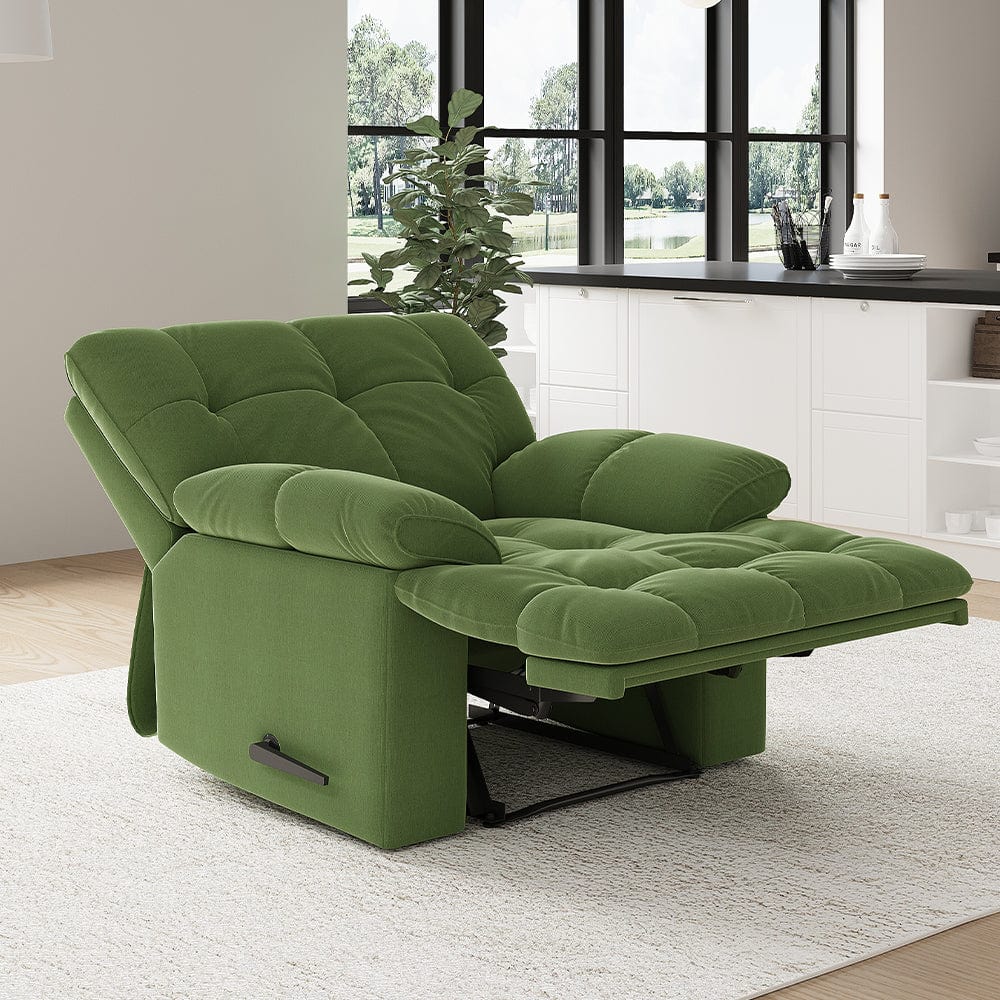Introduction:
As environmental awareness continues to grow, so does the demand for sustainable and eco-friendly products. In the world of furniture, green recliners have emerged as a stylish and environmentally conscious choice for consumers. In this article, we’ll explore the concept of green recliners, their benefits, and how they contribute to a more sustainable lifestyle.
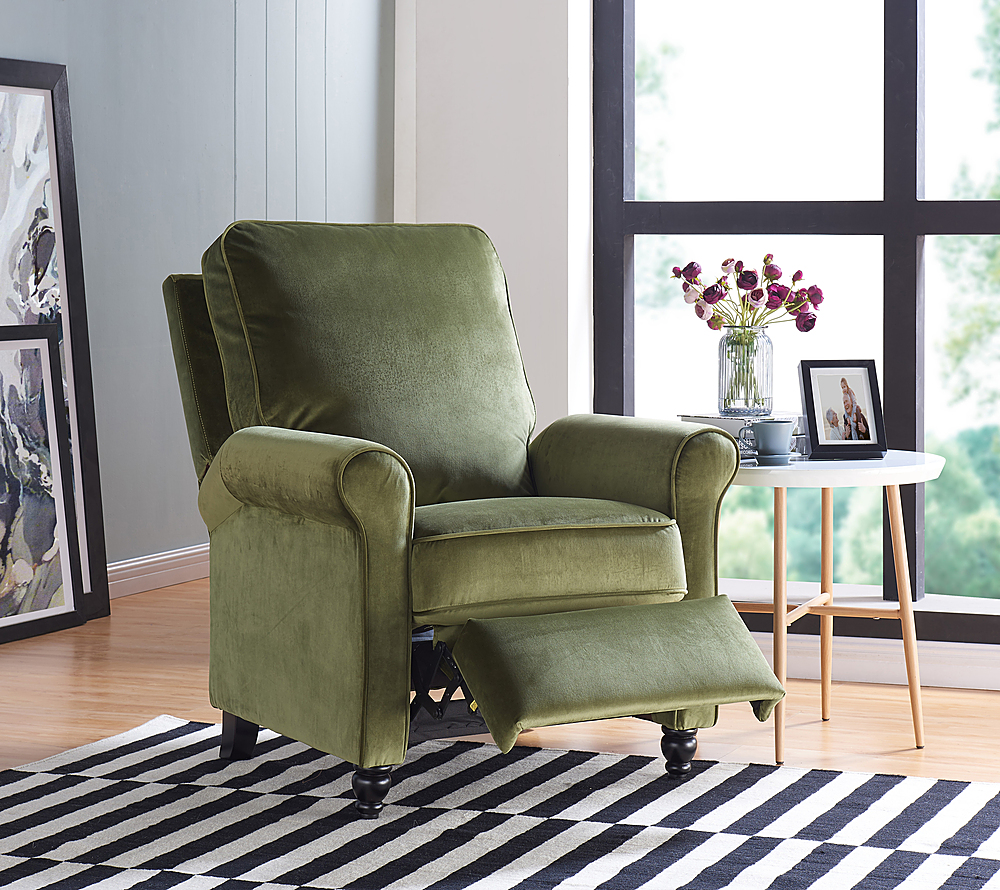
Understanding Green Recliners:
A green recliner is a reclining chair that is designed and manufactured with sustainability in mind. This means that the materials used in its construction, as well as the production processes involved, prioritize environmental responsibility and minimize the impact on the planet. Green recliners often incorporate recycled or renewable materials, eco-friendly manufacturing practices, and energy-efficient technologies.
Benefits of Green Recliners:
Choosing a green recliner offers a range of benefits for both consumers and the environment:
- Reduced Environmental Impact: By opting for a green recliner, you’re making a positive contribution to environmental conservation. These recliners typically use recycled materials, minimize waste generation, and support sustainable forestry practices, helping to reduce carbon emissions and preserve natural resources.
- Healthier Indoor Air Quality: Many green recliners are made with non-toxic and low-VOC (volatile organic compound) materials, which means they emit fewer harmful chemicals into the air. This promotes healthier indoor air quality and reduces the risk of respiratory issues and other health concerns associated with indoor pollution.
- Longevity and Durability: Green recliners are often crafted with high-quality materials and superior craftsmanship, resulting in durable and long-lasting furniture pieces. Investing in a green recliner means you’re not only making a sustainable choice but also ensuring that your furniture will stand the test of time, reducing the need for frequent replacements and minimizing waste.
- Support for Sustainable Practices: By purchasing a green recliner, you’re supporting companies and manufacturers that prioritize sustainability and ethical business practices. This encourages other companies to follow suit and helps drive positive change across the industry, leading to a more sustainable future for all.
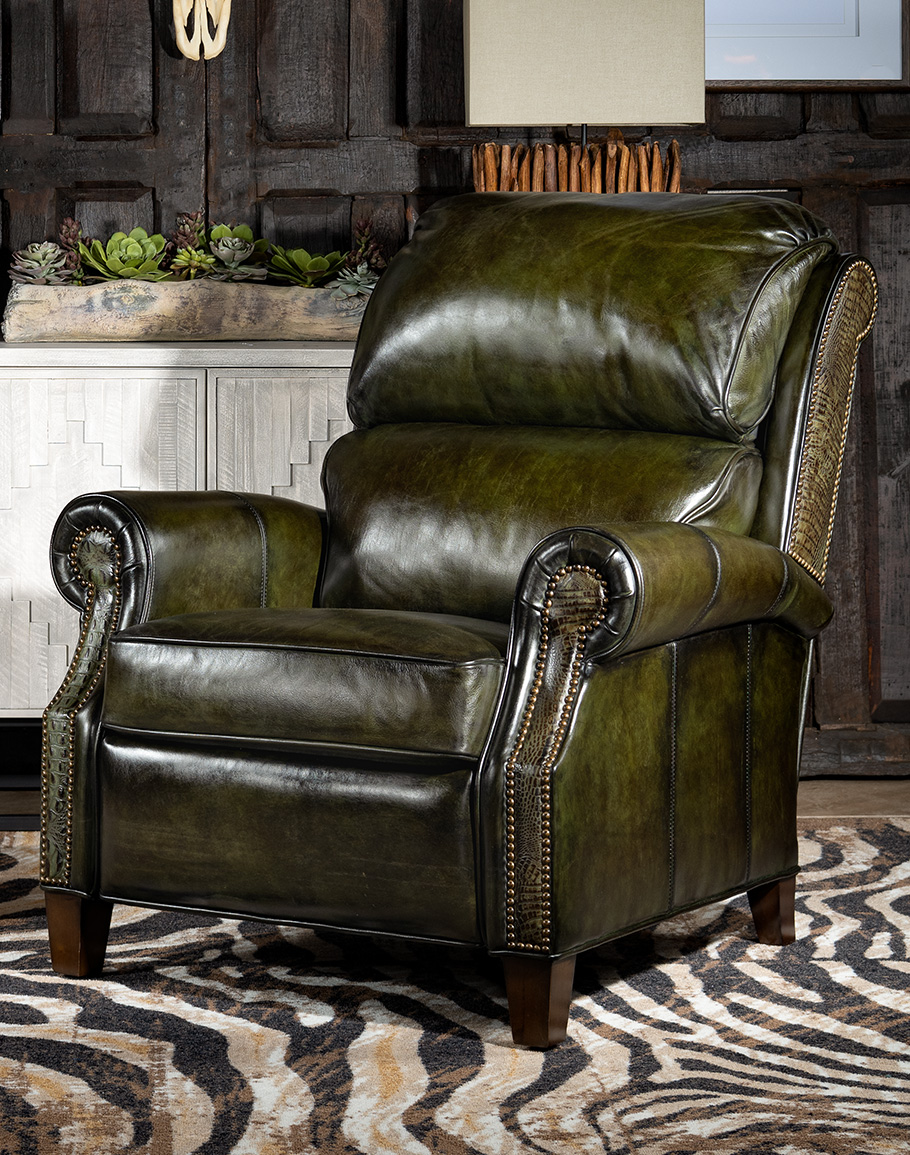
Materials and Construction:
Green recliners are typically made with a combination of eco-friendly materials, including:
- Recycled Materials: Many green recliners incorporate recycled materials such as recycled steel, aluminum, plastic, and wood. These materials are salvaged from post-consumer or post-industrial sources and repurposed into new furniture components, reducing the demand for virgin resources and diverting waste from landfills.
- Sustainable Wood: Wood used in green recliners often sourcing from sustainably managed forests that adhere to responsible forestry practices. Look for certifications such as Forest Stewardship Council (FSC) or Sustainable Forestry Initiative (SFI) to ensure that the wood used in your recliner comes from ethical and environmentally responsible sources.
- Natural and Organic Fabrics: Upholstery fabrics for green recliners may make from natural or organic fibers such as organic cotton, linen, hemp, or bamboo. These fibers are grown without synthetic pesticides or fertilizers, reducing environmental impact and promoting biodiversity.
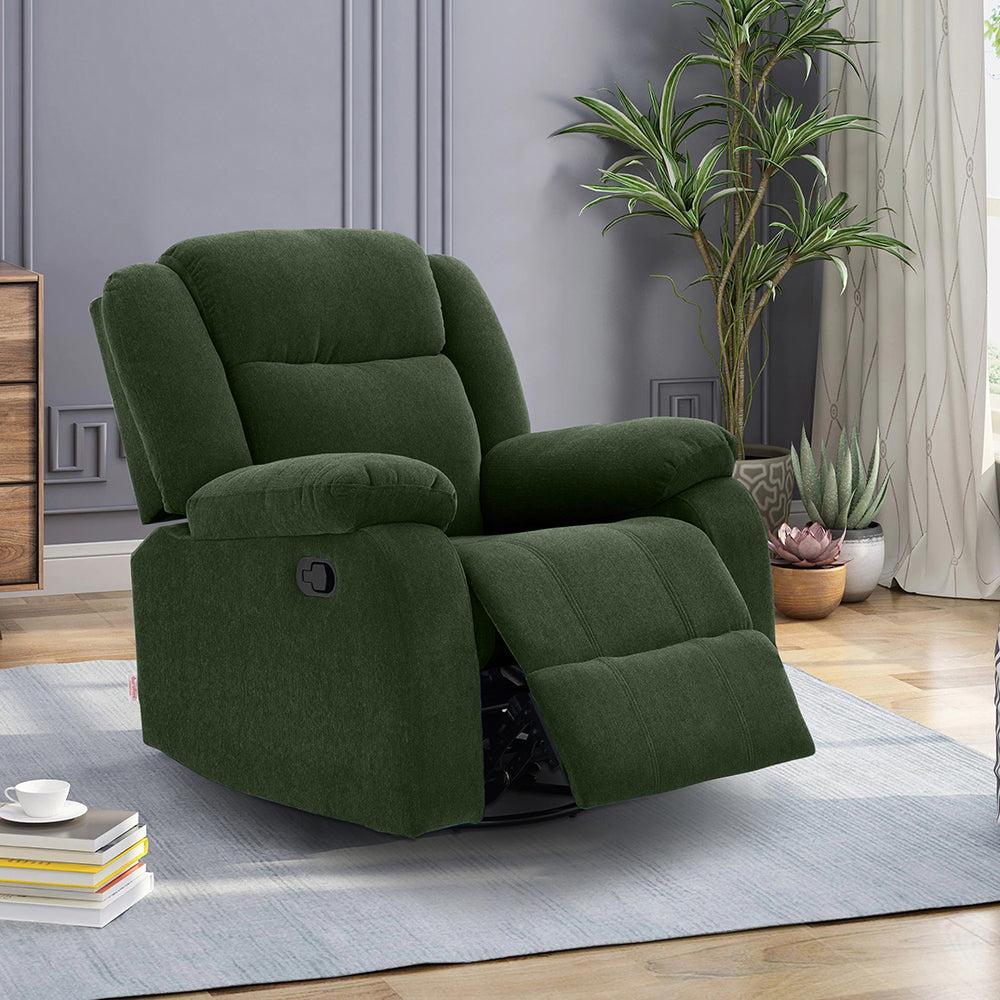
Design and Style:
Contrary to popular belief, green recliners come in a variety of styles and designs to suit different tastes and preferences. Whether you prefer modern minimalist aesthetics, classic and timeless designs, or rustic and eclectic styles, there’s a green recliner to complement any interior decor scheme. From sleek leather recliners to cozy fabric armchairs, you can find a sustainable seating option that aligns with your personal style while also reducing your environmental footprint.
Certifications and Standards:
When shopping for a green recliner, look for certifications and standards that attest to its sustainability and eco-friendliness. Some reputable certifications to watch out for include:
- GREENGUARD: Products certified by GREENGUARD undergo rigorous testing to ensure they meet stringent emissions standards for indoor air quality, contributing to healthier and safer indoor environments.
- Cradle to Cradle: The Cradle to Cradle Certified™ program evaluates products based on their environmental and social impact across their entire lifecycle, from material sourcing and production to use and end-of-life disposal. Recliners with this certification design with circular economy principles in mind, aiming to minimize waste and maximize resource efficiency.
- Eco-Certifications: Look for eco-labels and certifications specific to the furniture industry, such as the Sustainable Furnishings Council (SFC) certification or the Forest Stewardship Council (FSC) certification. These certifications indicate that the recliner meets certain environmental and social criteria, including responsible material sourcing, energy efficiency, and ethical manufacturing practices.

Cost Considerations:
While green recliners may initially come with a higher price tag compared to conventional recliners, it’s important to consider the long-term benefits and cost savings associated with sustainability. Investing in a green recliner means you’re purchasing a high-quality and durable piece of furniture that will last for years to come, reducing the need for frequent replacements and repairs. Additionally, the environmental and health benefits of green recliners offer long-term value that outweighs the upfront cost.
Consumer Reviews and Recommendations:
Before making a purchase decision, be sure to read consumer reviews and recommendations for different green recliners available on the market. Hearing from other consumers who have firsthand experience with the product can provide valuable insights into its quality, comfort, durability, and overall satisfaction. Look for reviews that specifically address sustainability and eco-friendliness to ensure the recliner meets your green living goals.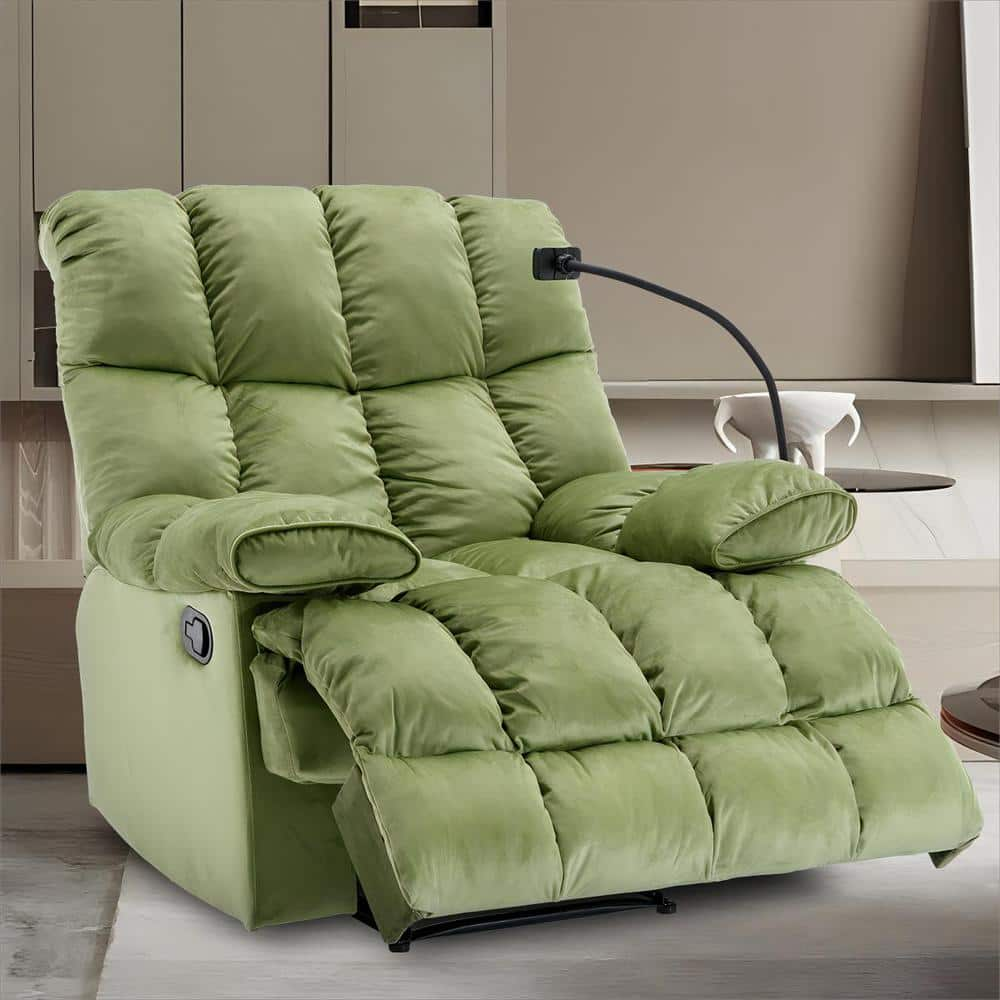
Creating a Greener Home:
Incorporating a green recliner into your living space is just one step towards creating a greener home environment. To further enhance sustainability in your household, consider implementing other eco-friendly practices and initiatives. This may include:
- Energy Efficiency: Invest in energy-efficient appliances, lighting fixtures, and heating/cooling systems to reduce energy consumption and lower your carbon footprint.
- Waste Reduction: Practice waste reduction and recycling by composting organic waste, minimizing single-use plastics, and opting for products with minimal packaging.
- Water Conservation: Install low-flow faucets and showerheads, fix leaks promptly, and incorporate water-saving practices such as collecting rainwater for gardening or using greywater for irrigation.
- Natural and Non-Toxic Cleaning Products: Switch to natural and non-toxic cleaning products made from eco-friendly ingredients to minimize exposure to harmful chemicals and reduce pollution.
- Sustainable Decor: Choose sustainable and eco-friendly materials for furniture, flooring, and decor items, such as reclaimed wood, bamboo, and recycled glass.
Conclusion:
Choosing a green recliner is not only a stylish and comfortable choice for your home but also a responsible and environmentally conscious decision. By embracing sustainability in furniture design and manufacturing, green recliners offer numerous benefits for both consumers and the planet. From reduced environmental impact and improved indoor air quality to long-lasting durability and support for sustainable practices, green recliners embody the principles of eco-friendly living and contribute to a greener, healthier future for all. So why settle for ordinary when you can go green and make a positive impact with every sit?
